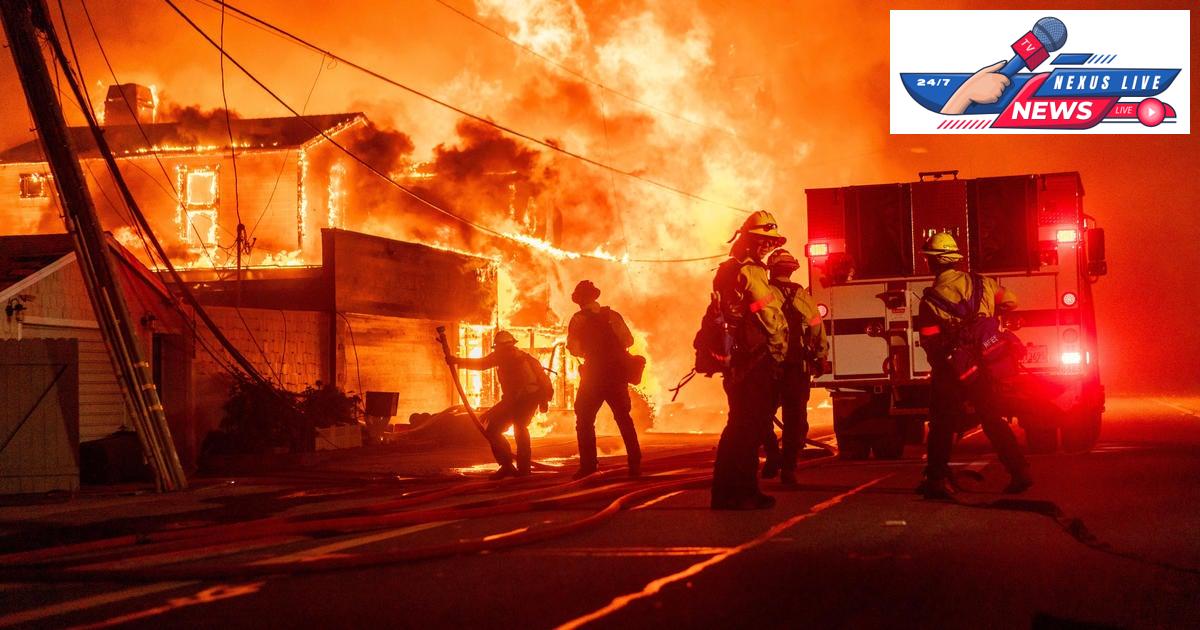Wildfires are raging across California as powerful Santa Ana winds whip through the region, prompting officials to order tens of thousands of evacuations. These winds, which reached gusts of up to 100 miles per hour, are making firefighting efforts increasingly difficult due to the rapid spread of the flames. The scenario is dire, with thousands of acres consumed in mere hours and numerous homes threatened by the advancing wildfires.
Dangerous Winds Ignite Multiple Blazes
Starting from January 7, 2025, the Santa Ana winds have fueled numerous fast-moving wildfires across Southern California. One of the most notable fires, the Palisades Fire, has already devoured over 3,000 acres within just a single afternoon. Reports indicate that these extreme winds are causing the fires to spread at alarming rates, creating an urgent need for evacuation.
Evacuations and Community Response
- In response to the threatening flames, various communities in Southern California have seen tens of thousands of residents evacuate their homes.
- Emergency services have been working around the clock to manage the incidents and guide residents safely out of harm’s way.
- People are being advised to prepare themselves and their families for potential evacuations by having emergency kits and plans in place.
The fire departments and local authorities urge everyone in impacted areas to stay updated and adhere strictly to evacuation orders, ensuring the safety of all individuals in these dire times.
Firefighting Efforts Challenged by High Winds
Firefighters are facing significantly challenging conditions due to the ferocity of the winds. Gusts have reached record speeds of 70–100 mph in areas such as Santa Clarita and Riverside, leading to widespread power outages affecting over 220,000 customers in Los Angeles County. Fire crews are struggling to contain the flames as wind-driven embers ignite new fires miles away from the original blazes, thereby complicating their efforts further.
Weather Patterns Contributing to the Crisis
AccuWeather meteorologists had predicted this critical situation, warning of heightened wildfire risks a week prior to the eruptions. The combination of strong winds and extremely low humidity has created an environment ripe for these fast-spreading wildfires. In fact, winds have been so harsh that even typically sheltered coastal areas are experiencing unusual gusts.
Community and Environmental Implications
Communities are now left to deal with the aftermath of the fires, which have already claimed numerous homes and left others in jeopardy. The destruction of property not only impacts families but also disrupts the local economy and environment. Wildlife habitats are being decimated, raising concerns over long-term ecological effects, while displaced residents face the daunting task of rebuilding their lives.
The Road Ahead
While weather forecasts indicate that winds may begin to lessen by mid-week, firefighting teams remain heavily engaged in battling the wildfires. The situation is dynamic and continues to evolve, as emergency services evaluate resources and strategies necessary to protect homes and lives.
| Location | Wind Gusts (mph) | Area Affected (acres) |
|---|---|---|
| Santa Clarita | 70 | 3,000+ |
| Riverside | 80 | In progress |
This ongoing crisis serves as a grave reminder of the increasing frequency and severity of wildfires, exacerbated by climate change and extreme weather conditions. As communities come together to support one another, the call for better preparedness and proactive measures in facing such calamities has never been more evident.

